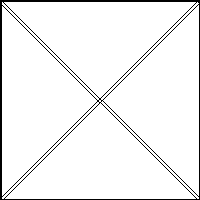Online Submissions
Already have a Username/Password for Trends in Horticulture?
Go to Login
Need a Username/Password?
Go to Registration
Registration and login are required to submit items online and to check the status of current submissions.
Submission Preparation Checklist
As part of the submission process, authors are required to check off their submission's compliance with all of the following items, and submissions may be returned to authors that do not adhere to these guidelines.
The submission has not been previously published, nor is it under the consideration of another journal (or an explanation has been provided in Comments to the Editor).
The submission file is in Microsoft Word format.
Where available, URLs for the references have been provided.
The text adheres to the stylistic and bibliographic requirements outlined in the Author Guidelines, which is found in About the Journal.
If submitting to a peer-reviewed section of the Journal, the instructions in Ensuring a Blind Review have been followed.
Copyright Notice
The Author(s) warrant that permission to publish the article that has not been previously assigned elsewhere.
Author(s) shall retain the copyright of their work and grant the Journal/Publisher right for the first publication with the work simultaneously licensed under:
OA - Creative Commons Attribution 4.0 International (CC BY 4.0). Under this license, author(s) will allow third parties to download, reuse, reprint, modify, distribute and/or copy the content under the condition that the authors are given credit. No permission is required from the authors or the publisher.

This broad license intends to facilitate free access, as well as the unrestricted use of original works of all types. This ensures that the published work is freely and openly available in perpetuity.
Privacy Statement
EnPress Publisher respects and strives to protect the privacy of its users and visitors. Hence, users and visitors are encouraged to read EnPress Publisher’s privacy policy regarding the usage and handling of user information.
(1) User information
Names and email addresses entered in all EnPress Publisher’s journal sites will be used exclusively for the stated purposes of the journals and will not be made available for any other purpose or to any other party. For submission and peer review, users should register an account for further procedures, including but not limited to name, email, address, interests, affiliation, and postcode, as editors need the information to complete in-house processes (e.g., processing a manuscript).
When users visit the publisher's website, information about the visit is saved in web logs (e.g., device, IP address, time of visit, etc.), which are only used to help improve the structure and content of the website.
(2) User rights
Users have the right to register or update their personal information and contact the publisher to cancel/delete their account if required.
(3) Third-party link
EnPress Publisher is not responsible for private information obtained by third-party websites when users log in via a pop-up screen from third-party software installed on their computer.
When users visit third-party platforms (e.g., LinkedIn, Twitter, COPE, etc.) through hyperlinks from EnPress Publisher’s journal websites, the privacy policy follows the policies of the third-party platforms.
(4) Queries or contact
For any queries about EnPress Publisher’s privacy policy, please contact the editorial office at editorial@enpress-publisher.com.







 (1)
(1)